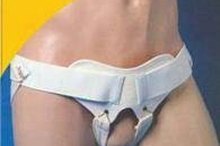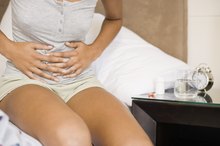How to Wear a Truss for an Abdominal Hernia
A hernia is caused by part an internal organ pushing through a weak area of muscle. Inguinal, or groin, hernias are the most common, according to MedlinePlus, but hernias can also occur in the abdominal wall 12. A physician can surgically correct the weak area of muscle, and may recommend that you wear a truss before or after surgery. A truss uses pads to compress the abdomen, and pushes the section of organ back into place. Trusses come in several styles, including step-in underwear-type garments with straps, and belts that wrap around the abdomen.
If you are experiencing serious medical symptoms, seek emergency treatment immediately.
Step into the underwear-style truss and pull it up over your hips. For belts, wrap the belt around your abdomen in the area of the hernia.
How to Make Your Own Truss for a Hernia
Learn More
Insert the hernia pad into the truss, directly over the hernia. Insert a second pad if you have hernias on both sides.
Gently press the pads to push the hernias back into the abdominal cavity 1. Secure the straps, or tighten the belt, to hold the pads in place and maintain compression on the hernia.
Tips
Dress as you normally would and conduct your normal daily activities, as approved by your physician. Some trusses may have built-in pads. In which case, skip Step 2. If you are wearing the truss post-surgery, skip Step 3. Consult your physician to determine which type of truss you need. The truss needs to fit properly and needs the correct number of pads to adequately compress the hernia.
Related Articles
References
- Merck Manuals: Hernias of the Abdominal Wall
- MedlinePlus: Hernia
- “The Doctor's Guide to Gastrointestinal Health”; Paul Miskovitz and Marian Betancourt; 2005
- Fitzgibbons RJ, Forse RA. Groin hernias in adults. N Engl J Med. 2015;372(8):756-763. doi:10.1056/NEJMcp1404068
- Merriam-Webster Dictionary. Definition of HARUSPEX. Updated 2020.
- Mahadevan V. Essential Anatomy of the Abdominal Wall. In: Kingsnorth A, LeBlanc K, eds. Management of Abdominal Hernias. Fourth. London: Springer Science & Business Media; 2013:25-55.
- M BS. SRB’s Manual of Surgery. Sixth. London: Jaypee Brothers, Medical Publishers Pvt. Limited; 2019:739-776.
- Wang H, Naghavi M, Allen C, Barber R, Bhutta ZA, Carter A. Global, regional, and national life expectancy, all-cause mortality, and cause-specific mortality for 249 causes of death, 1980–2015: a systematic analysis for the Global Burden of Disease Study 2015. The Lancet. 2016;388(10053):1459-1544. doi:10.1016/S0140-6736(16)31012-1
- Hoffmann H, Walther D, Bittner R, Köckerling F, Adolf D, Kirchhoff P. Smaller inguinal hernias are independent risk factors for developing chronic postoperative inguinal pain (CPIP). Annals of Surgery. 2020;271(4):756-764. doi:10.1097/SLA.0000000000003065
- Dhua AK, Aggarwal SK, Mathur N, Sethi G. Bilateral congenital diaphragmatic hernia. APSP J Case Rep. 2012;3(3):20. PMID: 23061036
Writer Bio
Julia Michelle has been writing professionally since January 2009. Her specialties include massage therapy, computer tech support, land and aquatic personal training, aquatic group fitness and Reiki. She has an Associate in Applied Science from Cincinnati State Technical and Community College in integrative medical massage therapy.







